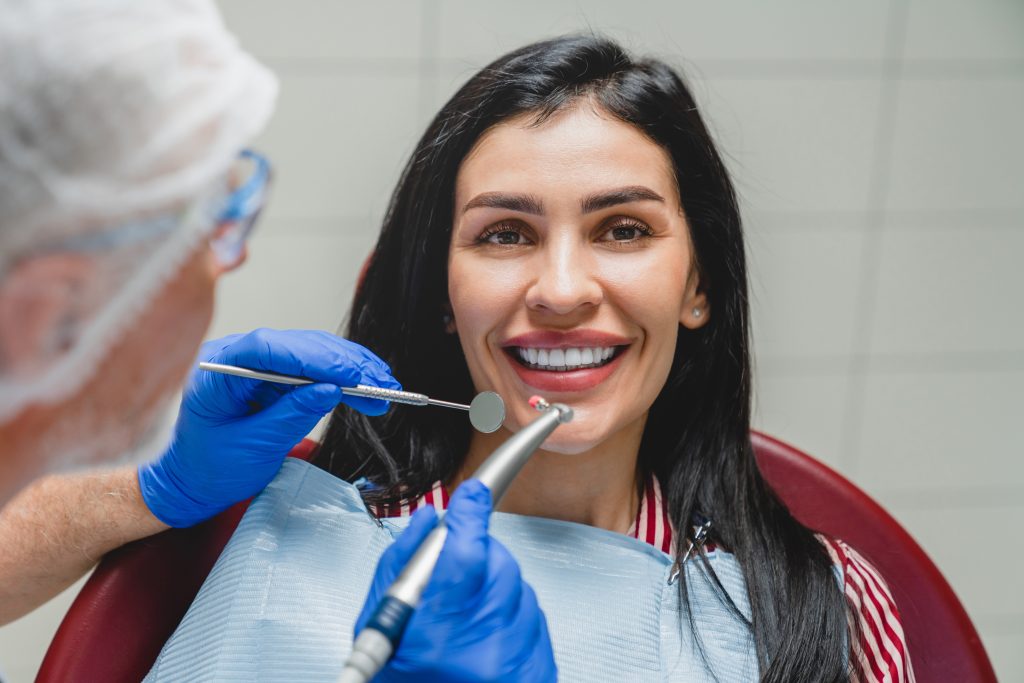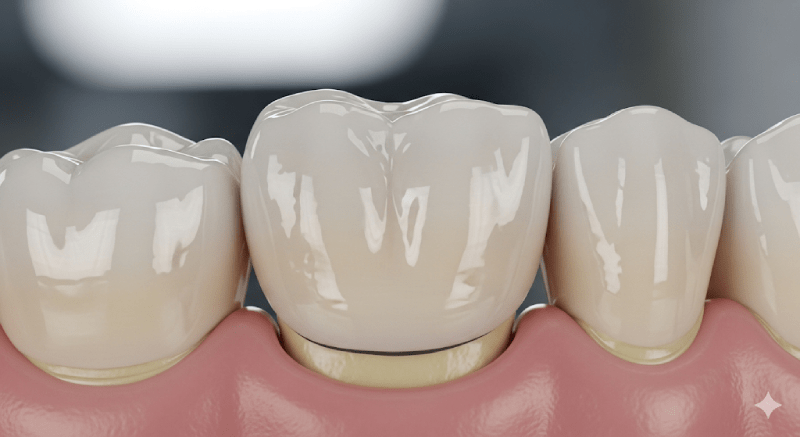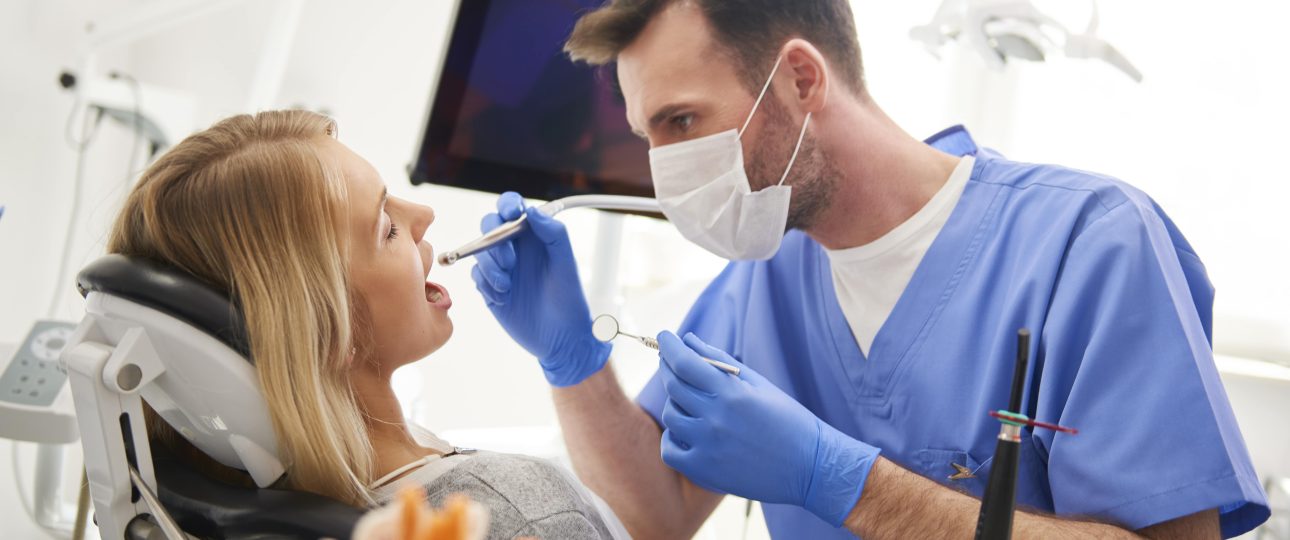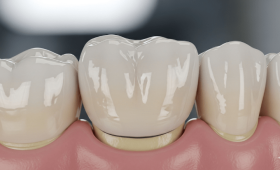Dental Crown Process: Redesign Your Smile
Dental crowning is one of the most fundamental and effective applications of aesthetic dentistry. This treatment not only repairs broken or damaged teeth but also addresses aesthetic concerns, giving you a brand new and confident smile. This comprehensive guide will shed light on this journey by explaining every stage of the dental crown process in the finest detail.
What is a Dental Crown?
A dental crown is a tooth-shaped “cap” that covers the entire tooth and gives it a new outer surface. This prosthesis, placed over the tooth, is used to strengthen a weakened or broken tooth, support a large filling, improve the shape or color of a tooth, and even complete a missing tooth by being placed on an implant. Crowns are applied for both aesthetic and functional purposes and protect the tooth from external factors.
Who Needs a Dental Crown?
There are many different patient profiles who need a dental crown. One of the most common reasons is the loss of a significant part of the tooth due to large cavities or trauma, making it impossible to repair with a filling. Additionally, a crown may be preferred to prevent a weakened tooth that has undergone root canal treatment from breaking, to improve the appearance of a tooth with severe discoloration, and to close gaps between teeth. Teeth that are worn down due to habits like teeth grinding (bruxism) can also be protected with crowns. Individuals who are unhappy with the shape or size of their teeth due to aesthetic concerns can also resort to this treatment.
The Purpose of a Dental Crown
The purpose of a dental crown is not only to repair or protect a tooth. The treatment is based on both a functional and aesthetic reconstruction. Functionally, the crown makes the tooth resistant to chewing forces, preventing it from breaking or cracking. Aesthetically, it aims to provide a look that is as close as possible to the natural color and shape of the tooth, ensuring harmony with your smile. The crown also contributes to smile aesthetics by closing gaps between teeth or correcting minor imperfections in the tooth alignment.
Types of Dental Crowns
Today, there are many different types of dental crowns used in dentistry. These crowns are categorized by the material they are made of, and each has its own unique advantages and disadvantages. The most common types include porcelain, zirconia, porcelain-fused-to-metal, and all-ceramic crowns. The most suitable type of crown for you will be determined by a detailed examination by your dentist.
Porcelain Dental Crowns
Porcelain dental crowns are one of the options that offer the most natural aesthetic appearance. Thanks to the light-transmitting property of porcelain, the translucency and vitality of a natural tooth are captured. These crowns are especially preferred in cases where aesthetic concerns are at the forefront, particularly for front teeth. They are custom-made in terms of color and shape and are highly resistant to staining. Since they are made entirely of porcelain, they are also a suitable alternative for patients with metal allergies.
Zirconia Dental Crowns
Zirconia dental crowns have surpassed porcelain in terms of both aesthetics and durability. Zirconia is a biocompatible, strong, and metal-free material. Thanks to this feature, it prevents a gray line from forming on the gum line and provides a natural look. Zirconia shows high resistance to chewing forces, especially on back teeth. Its light-transmitting properties also allow it to be successfully used on front teeth, providing a more natural result than porcelain-fused-to-metal crowns.

Porcelain-Fused-to-Metal Crowns
Porcelain-fused-to-metal crowns are a classic type of crown that has been used in dentistry for many years. The inner part of these crowns consists of a metal substructure, and the outer part is made of porcelain. The metal substructure provides high durability and resistance to the crown, which is why it is often preferred for back teeth and bridge prostheses. However, since the metal has low light transmission, it has some aesthetic limitations and can cause graying of the gum line over time.
Gold Crowns
Gold crowns have an important place in the history of dentistry and are known for their durability. Gold is a very biocompatible metal and has a low likelihood of causing allergic reactions. These all-gold crowns show extraordinary resistance to chewing forces, especially on back teeth. Although their use has decreased today due to aesthetic preferences, they can still be preferred in some cases.
Initial Examination and Diagnosis
The first and most critical step of the dental crown process is a detailed examination and accurate diagnosis. Your dentist will evaluate the condition of your teeth, gums, and overall oral health. In addition to traditional methods, modern imaging techniques such as digital X-rays and 3D tomography are used to better see the tooth’s root structure and bone tissue. At this stage, the patient’s aesthetic expectations and wishes are also heard. An accurate diagnosis is the foundation of a successful treatment plan.
Treatment Planning
Following the examination and diagnosis, your dentist will prepare a personalized treatment plan. This plan includes which teeth will be crowned, which crown material will be used, whether additional treatments (root canal, filling, etc.) are needed, and the estimated duration and cost of the entire process. Using tools like digital smile design (DSD), the final version of the crowns can be designed in a digital environment with the patient, ensuring a better understanding of the patient’s expectations and the treatment outcome.
Tooth Preparation
The preparation of the tooth for a crown is one of the most important technical stages of the treatment. The dentist removes a minimal amount of enamel and dentin tissue from around the tooth to allow the crown to fit perfectly. This procedure is done to make room for the crown and to shape the tooth. The amount of reduction varies according to the chosen crown material (for example, less reduction may be needed for all-ceramic crowns). This procedure is generally painless because it is performed under local anesthesia.
Taking Impressions and Temporary Crown
After the tooth is prepared, an impression of the tooth is taken using digital or traditional methods so that the crown can be produced in the correct size and shape in the laboratory. In traditional methods, a paste-like material is used, while modern clinics use intraoral scanners to take digital impressions. Digital impressions provide more precise results and speed up the laboratory process. While the permanent crown is being prepared, a temporary crown is made and cemented onto the tooth to protect it from sensitivity and provide an aesthetic appearance. This temporary crown protects the tooth during the preparation of the permanent crown.
Laboratory Process
After the impressions are sent to the laboratory, the dental technician produces the crown using modern CAD/CAM (computer-aided design/computer-aided manufacturing) technologies or traditional methods. In this process, the crown’s material is carefully selected, designed to best match the tooth’s color and shape, and hardened by baking in state-of-the-art ovens. The quality of the laboratory directly affects the aesthetics and durability of the crown.
Crown Try-in and Adjustment
The crown from the laboratory is tried in the patient’s mouth before being permanently cemented. During this try-in, the dentist checks the crown’s fit with the tooth, the marginal gaps, color, and contact with adjacent teeth. The crown’s harmony with the patient’s smile and facial features is evaluated. If necessary, minor adjustments can be made to ensure the crown fits perfectly. This stage is extremely important to guarantee the success of the treatment.
Permanent Cementation of the Crown
After the crown is confirmed to fit perfectly in the patient’s mouth, it is permanently cemented to the tooth using a special dental cement. This cement creates a strong bond between the crown and the tooth and prevents the crown from shifting or coming off. After the cementation is completed, the excess cement is cleaned, and the dentist performs final checks to ensure the crown is seated correctly.
Pain and Comfort Level
The dental crown process, when applied correctly, proceeds with minimal discomfort. The tooth preparation stage is performed under local anesthesia, so the patient does not feel any pain. For the first few days after the procedure, there may be a slight sensitivity or pressure. This condition usually resolves on its own within a few days and can be controlled with pain relievers if needed.
How Long Does the Treatment Process Take?
A dental crown treatment for a single tooth is usually completed in 2 to 3 appointments. In the first appointment, the tooth is prepared and an impression is taken, in the second appointment, a try-in is performed, and in the third appointment, the crown is cemented. The time between appointments varies depending on the laboratory’s workload and the technology used. Generally, the entire process can be completed within one or two weeks.
Lifespan and Durability of the Crown
Dental crowns are long-lasting and durable, just like natural teeth. The lifespan of the crown depends on the quality of the material used (for example, zirconia crowns can be more durable) and the patient’s oral hygiene. With regular and proper care, a dental crown can last for 15-20 years or even longer. Habits like teeth grinding can shorten the lifespan of the crown.

Post-Crown Care and Recommendations
Regular and proper care is essential for the longevity of a dental crown. You should brush your teeth at least twice a day, and use dental floss or an interdental brush to clean between your teeth. Avoid biting into overly hard foods and use a night guard if you grind your teeth. Most importantly, do not neglect your routine dental check-ups and professional cleanings.
Cost of Dental Crowns
The cost of a dental crown varies greatly depending on the complexity of the treatment and the materials used. Zirconia crowns can be more expensive than porcelain-fused-to-metal crowns. The country where the clinic is located, the dentist’s experience, and the quality of the laboratory are other factors that affect the price.
Advantages of Getting a Dental Crown in Turkey
Turkey has become a worldwide center for dental crown treatments. It offers high-quality service at much more affordable prices compared to Western countries. It is home to modern clinics equipped with the latest technologies and expert, experienced dentists with international recognition. It also offers the opportunity to combine dental treatment with a historical and cultural trip, making Turkey an attractive option for health tourism.
The Dental Crown Experience with Cure Holiday
Finding the right place to entrust your teeth is vital for the success of the treatment. This is where Cure Holiday comes in. Cure Holiday is a health tourism partner that offers special solutions for your dental crown needs. It plans not only your treatment process but also all your travel and accommodation arrangements. It takes care of all the details, such as airport transfers, comfortable hotel stays, and city tours after the treatment. This way, you can focus solely on the transformation of your smile.
Real Patient Stories
One of the best ways to understand the transformative power of dental crowns is to listen to real patient stories. It is inspiring to see how a person who has avoided smiling for years due to a broken tooth or an old filling regains their confidence with a new crown. You can find such inspiring stories and patient reviews on Cure Holiday‘s website. These stories show how possible it is to achieve the smile of your dreams.
Frequently Asked Questions
- Will I feel pain while getting a crown? No, you will not feel any pain as the procedure is performed under local anesthesia.
- Will my crowned tooth look natural? Yes, thanks to modern materials and digital design, an aesthetic that is indistinguishable from your natural teeth can be achieved.
- Can a crowned tooth get a cavity? No, the crown itself does not get a cavity. However, good oral hygiene is required to prevent the tooth tissue and gum under the crown from decaying.
- Is there an age limit for getting a dental crown? It is generally suitable for individuals who have reached the age of 18 and have completed their jawbone development.
Contact Cure Holiday
Now that you have learned all the details about dental crowns, you are one step closer to the smile of your dreams. Cure Holiday provides an environment where you can confidently entrust your smile, with its expert physicians, modern clinic infrastructure, and impeccable customer service. Take the first step by visiting their website or contacting them directly and say hello to your radiant smile.



